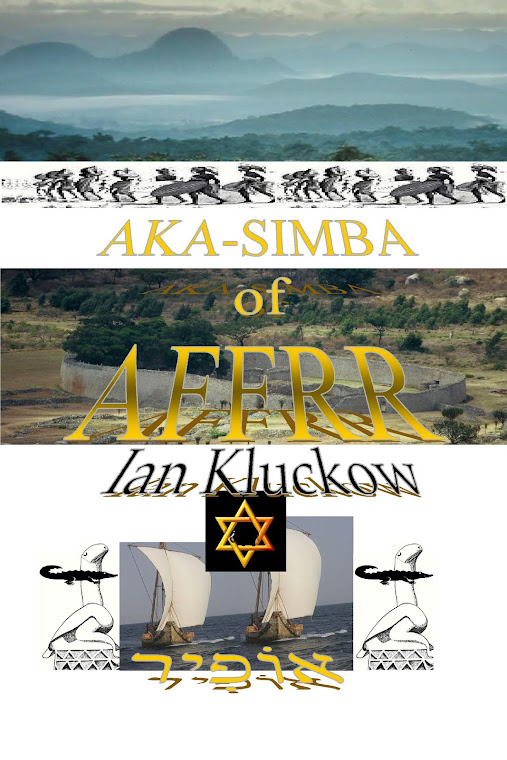Who were the builders of the Great Zimbabwe the largest most intact ancient temple in the southern hemisphere? Tens of thousands of pages have been written on this still controversial question. Anyone trying to make sense of the subject has to plough through vague references by Romans, mention of mysterious places by ancient Arabs, manuals by early Portuguese mariners on their way to India or missives to the kings by Mozambique minions. The old European explorers and ‘naturalists’ of the late nineteenth and early twentieth century’s wrote reams on the topic. To cap it all, the new religion of the world, science, has given us archaeology - and there has been no shortage of well-funded high priests digging up the ruins and proclaiming they have proof of the truth.
I, like many, have been fascinated since childhood by the riddle of the Great Zimbabwe. As I grew up I read everything on the subject that I was able to lay my hands upon. One day during the 1970’s I came across a fascinating and well written book, The Origins of the Zimbabwe Civilisation, by Prof. Robert Gayre. It contradicted everything that was being disseminated by the pro-bantu school of thought. I was fascinated. I had read The Rise and Fall of Zimbabwe, by Prof. T. N. Huffman, head of Archaeology at the University of Witwatersrand in South Africa and one of the leading proponents of the theory that the Shona people built the Great Zimbabwe. Writing of a 1906 Bantu interpretation as the builders of the Great Zimbabwe Huffman said: ‘Randall-MacIver developed the theory that Zimbabwe was 'essentially African' over sixty years ago. It has been reaffirmed with every Iron Age excavation in Rhodesia and never seriously scientifically questioned.
I was intrigued to find Huffman did say: ‘MacIver's interpretation was strenuously rejected by the public - a rejection still found today’. He even admitted:‘- the British Association commissioned Gertrude Caton-Thompson in 1929 to resolve the debate. She vindicated MacIver in most respects, particularly his 'essentially African' interpretation and mediaeval dating. The debate over the origins of the Zimbabwe culture, however, involves emotion and politics as well as scientific enquiry, and adherents of the exotic hypothesis were not convinced.’
Here was a man with seemingly impeccable credentials being economical with the truth or lying, for he made no mention of the brilliant, incisive and scathing work on the subject by Prof. Gayre. It was a startling piece of dishonesty which I was to learn was only one of many.
Many people do still question or reject the Iron Age Bantu Shona theories of many modern scientists. There are good reasons for this, the first being that the theories of Prof. Huffman and others like him, with their strenuous efforts to peddle ideas disguised as scientific truth, i.e. that Shona society today is a version of what pertained six hundred or more years ago, simply do not sit well or make common sense to those who know Africa and are quick to see through scientific mumbo-jumbo. The second being the fact that Huffman and others of his school of thinking have generally branded theories opposed to their own as polemics or racist and have more or less consistently ignored history and the oral traditions and claims of the enigmatic Lemba people.
In seeking the truth of the matter I have waded through literally scores of confusing books and papers on the subject. Many of these books are out of print and now unobtainable. Aka-Simba of Affrr – A History of the Great Zimbabwe Mystery is a re-evaluation and compilation of extracts from both ancient and modern sources. It is not a scientific tome – to add to the religion’s already straining shelves. It is a speculative journal comparing the modern so called archaeological facts with some fascinating snippets of history. It examines the differences, exposes the myths and offers new insights from old material as to who might have been the builders, occupiers, kings or emperors of the still mysterious Great Zimbabwe.
A final startling twist and theory offered in the penultimate chapter, links the Great Zimbabwe and its enigmatic tower, to London’s most prestigious and sought after office accommodation – 30 St Mary Axe, better known as the Gherkin. The reader is left with what some will consider bizarre thoughts – which offer an explanation as to why the truth of Great Zimbabwe has been carefully concealed, and what true history may have been.




No comments:
Post a Comment